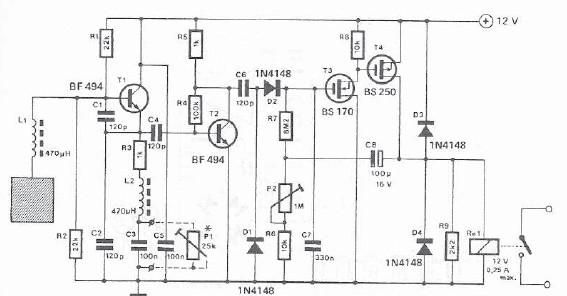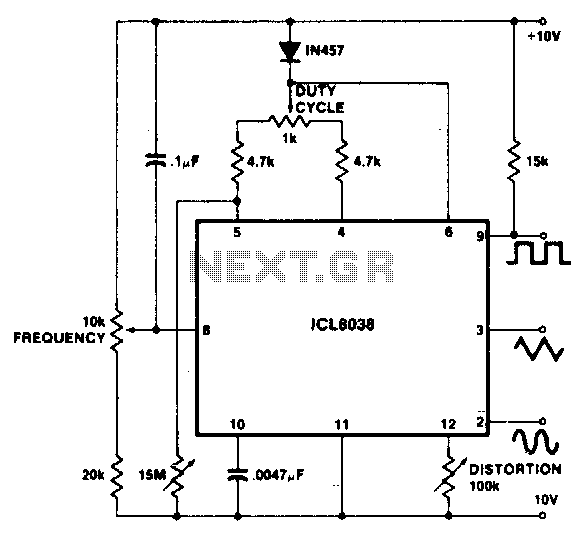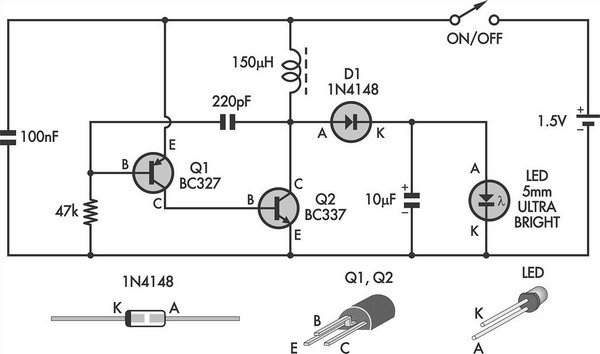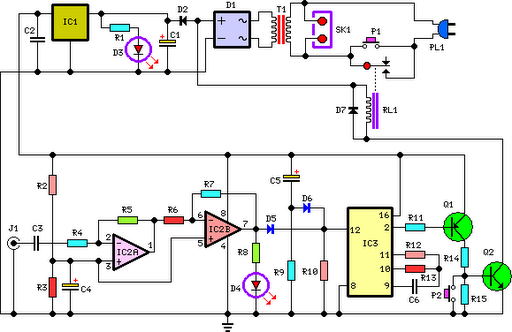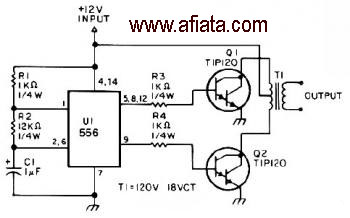
50Hz 60Hz Frequency Generator Circuit Using Crystal Oscillator

A frequency generator circuit capable of producing 50 Hz and 60 Hz outputs using a crystal oscillator. This oscillator can be utilized to generate precise frequency signals.
This frequency generator circuit employs a crystal oscillator as its core component, which ensures high stability and accuracy in frequency generation. The circuit is designed to provide selectable output frequencies of 50 Hz and 60 Hz, making it suitable for various applications, including timing circuits, signal processing, and synchronization tasks.
The crystal oscillator operates at a specific resonant frequency determined by the physical characteristics of the crystal used. In this circuit, additional components such as resistors, capacitors, and possibly a flip-flop or a counter may be incorporated to divide the oscillator frequency down to the desired output frequencies.
For instance, if the crystal oscillator operates at a fundamental frequency of 8 MHz, a series of frequency dividers can be used to achieve the necessary division ratios to produce the target frequencies. A common approach is to use a binary counter that divides the input frequency by 160, resulting in a 50 Hz output, or by 133.33 for a 60 Hz output.
The output stage of the circuit may include a buffer or an amplifier to ensure adequate signal strength for driving loads or interfacing with other circuitry. Careful consideration should be given to the power supply requirements, as well as the output impedance, to ensure compatibility with connected devices.
Overall, this frequency generator circuit represents a versatile solution for generating low-frequency signals with high precision, leveraging the inherent stability of crystal oscillators.50 Hz 60 Hz frequency generator circuit using crystal oscillator You can generate 50Hz or 60Hz using this frequency generator. This oscillator.. 🔗 External reference
This frequency generator circuit employs a crystal oscillator as its core component, which ensures high stability and accuracy in frequency generation. The circuit is designed to provide selectable output frequencies of 50 Hz and 60 Hz, making it suitable for various applications, including timing circuits, signal processing, and synchronization tasks.
The crystal oscillator operates at a specific resonant frequency determined by the physical characteristics of the crystal used. In this circuit, additional components such as resistors, capacitors, and possibly a flip-flop or a counter may be incorporated to divide the oscillator frequency down to the desired output frequencies.
For instance, if the crystal oscillator operates at a fundamental frequency of 8 MHz, a series of frequency dividers can be used to achieve the necessary division ratios to produce the target frequencies. A common approach is to use a binary counter that divides the input frequency by 160, resulting in a 50 Hz output, or by 133.33 for a 60 Hz output.
The output stage of the circuit may include a buffer or an amplifier to ensure adequate signal strength for driving loads or interfacing with other circuitry. Careful consideration should be given to the power supply requirements, as well as the output impedance, to ensure compatibility with connected devices.
Overall, this frequency generator circuit represents a versatile solution for generating low-frequency signals with high precision, leveraging the inherent stability of crystal oscillators.50 Hz 60 Hz frequency generator circuit using crystal oscillator You can generate 50Hz or 60Hz using this frequency generator. This oscillator.. 🔗 External reference
